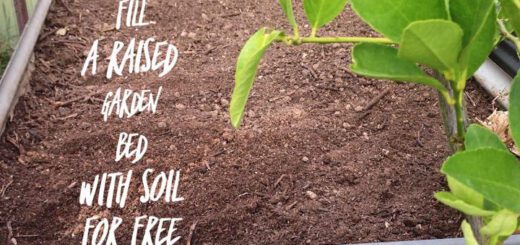Propagating from cuttings
The best time to take cuttings is late spring or early summer. Taking (or propagating) cuttings means “to make new plants” ie to reproduce. Or in simpler terms: to get more of the same plant for free!
There are basically four kinds of cuttings: Herbaceous ( from non-woody plants) softwood (when the stems are still green) and semi-hardwood (just after a flush of growth but not quite woody yet) and hardwood cuttings (full on woody stems cut in winter when the plant is dormant). The chances of rooting taking place are highest with herbaceous cuttings and then decrease the more mature the cutting gets. But not all plants can be propagated from softwood cuttings, so all of them are valuable.
To choose the right cutting to take look for a piece that looks like it has grown in the current or the past season and avoid flowering ends. If there are flowers on it, cut them off so the plant makes roots not flowers. Obviously, try and take cuttings from healthy plants without nutrient deficiencies.

Different kinds of hardwood cuttings: straight, mallet and heel (Source: NCSU)
Then, the moment of truth! Cut off a 6-10 cm piece with as many buds as you can find. The plant cells around the buds can make either leaves or roots (plants are amazing), so the more buds you have the more chances of making roots you get.
Once you have your cuttings all safely stashed away in your bag wrapped in wet towel or newspaper it’s time for planting! It’s quite easy to do. All you need is a large clean pot, or if you want to make a big batch a polystyrene box is quite suitable.

You can either purchase a bag of propagating mix from places like Bunnings, Mitre 10, your local plant nursery, or you can make up your own mix.
If you want to make up your own mix – simply mix an equal measure of potting mix, coarse river sand and peat moss (We get that Australia doesn’t have a great deal of river sand or peat moss either, so a 50/50 mix of compost and garden soil does the job as well). Don’t use building sand or sea sand. The main thing is to have a nice light friable blend that holds moisture. What you don’t want for cuttings is heavy clay, neither should the cuttings be kept too dry or too wet.
Once you have decided on the pot/container, (make sure that you have adequate drainage holes), put either plastic netting, (from orange bags) broken terracotta shards and/or charcoal at the bottom of the container, then fill with the propagating mix to about ¾ of the container. I think that it is good to have a bit of protection around the plants while they are still vulnerable.

A small dibber (taken from Wikipedia)
You will need a dibber, which just means a stick, a pencil, a chopstick (or even a little finger!) – any of these will do, to poke a hole into the propagating mix, which you will then pop in the trimmed cuttings to a leaf join at the bottom. Make sure to remove surplus leaves/greenery at the top of the plant, as this just makes the life of the new plant so much harder. Why? because the leaves want to suck up water from the roots, that are now non-existent because we took a cutting! Therefore the baby tree cutting will have huge confusion about what’s going on, so just leave one or two small leaves at the top. Then just gently press around the cuttings and repeat till all are planted. It’s quite OK to put quite a few in the container, in fact I believe it improves the chances of cuttings “taking”.
Very important: Try and put as many buds as you can into the soil because they are the spots where new roots start to grow.
You can use an agent to encourage growth, if you like, such as hormone powder, honey and I have even recently heard of using vegemite, though I have not tried it myself.

Vegemite – some use it for propagating, or for use in mouse traps – or even for adding to toast!
You can plant fresh softwood (green) cuttings or cuttings that you have kept in a glass of water over an amount of time. Some plants can show signs of growth or develop roots this way.

These tomato roots are coming in
Once you have finished planting your cuttings, water them well with warm water.
Do not place your newly “planted babies” in the full sun if it is hot , rather in semi sun/shade.
As the plants grow and show signs of “taking”, you can move them into a more sunny spot. Beware fake growth! Some plants (like figs or grapes) will shoot new leaves but not roots, so be patient and wait until the cutting starts to really grow strong.
Don’t undig plants to see how they are doing. If you see buds that are getting plump, extra leaves or flowers appearing – this is GOOD NEWS and you will know that you have hit the jackpot and you are on the right track.
Be patient. Some plants are easier than others to get going.
Why do it? It’s fun. It’s challenging. You can swap plants with family, friends, and neighbours and get to know people better. You can give a plant as a gift. If you are moving house, you can take some of your favourite plants with you. They can remind you of someone nice.
Our special tip: Propagate figs! They are abundant in the suburbs, and grow really easily from cuttings and are basically the perfect gift.
ENJOY!
Special thanks to Rose of Eastern Suburbs Permaculture Group for providing elements of this article.















